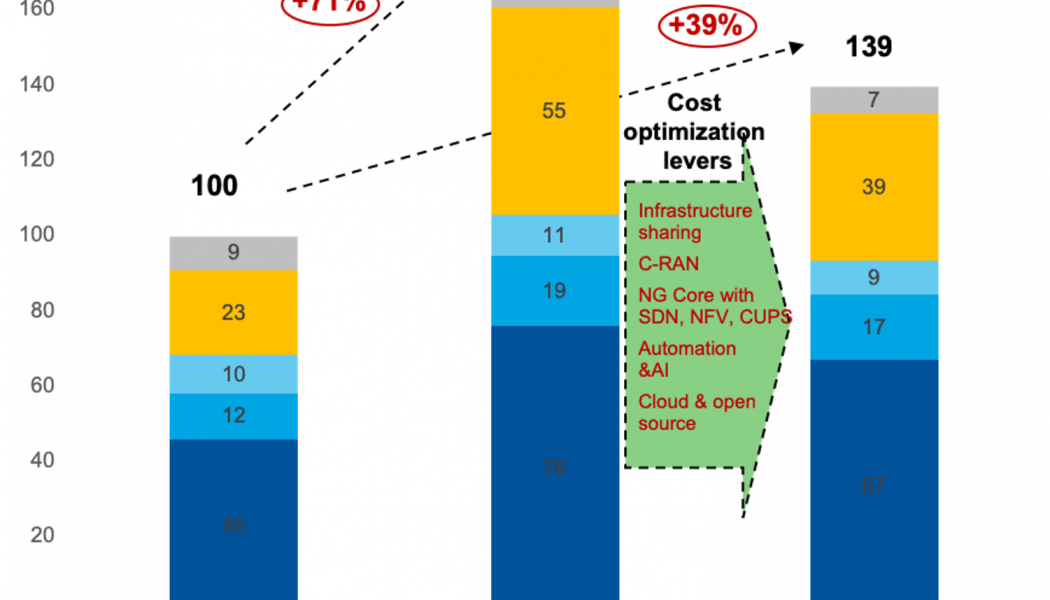Convergence is nothing new, however as technology evolves this is being taken to unprecedented levels. The cloud, the endpoint, the edge and now 5G are converging and changing the way we collaborate, connect and communicate.
However, for telcos and operators, adapting to a 5G world can be a challenge. Not only does it involve new infrastructure, but it also means adapting business models, embracing Artificial Intelligence (AI) and Machine Learning (ML) and potentially developing entirely new revenue streams.
At the heart of the ability to leverage 5G effectively lies data, which must be portable, protected and above all available for analysis. Data is the key to unlocking the value of 5G for operators.
The 5G opportunity
/* custom css */
.tdi_3_90d.td-a-rec-img{ text-align: left; }.tdi_3_90d.td-a-rec-img img{ margin: 0 auto 0 0; }
While 5G offers unprecedented connectivity speeds, it is about far more than simply enabling faster downloads. It enables new scenarios that are either difficult or impossible with current technology, combining the pieces of hyperscale cloud, rich communications and the intelligent edge with low latency, high-speed connectivity. With ubiquitous compute from the core to the edge, real-time actionable insights driven by AI and ML, and the intersection of the physical and virtual worlds, 5G is a complete game-changer.
However, this poses a challenge for operators. The current operator landscape is driven by consumer-focused business models, specifically around offering great experiences on mobile phones with access to data. However, 5G and the intersection of the Internet of Things (IoT) increases the number of endpoints and sensors on a massive scale. Services therefore also need to evolve to incorporate more Business to Business (B2B) and Machine to Machine (M2M) models.
The economics of the operator are poised to be significantly disrupted. While this is understandably challenging, it is also an opportunity to unlock new value. Low-latency and edge compute capabilities can deliver new solutions and services.
One example is rich connectivity for medical devices. This is enabled via network slicing, which allows spectrum to be allocated specifically to ensure the quality of service of such devices. In addition, infrastructure as software capabilities allow for self-optimising networks, which can dynamically allocate spectrum using AI models.
Intelligence needs data
To leverage these opportunities, operators need to be able to drive simplicity, scale and cost efficiency, along with future-proof, flexible infrastructure to enable new opportunities and business models. While the hardware and sensors are important pieces of the puzzle, the AI models are where value and competitive advantage lie. In turn, the value behind AI is driven by the data that is used to train the models.
Data lies at the very heart of the 5G opportunity, and is the main source of competitive advantage. This data is what informs the decisions made by AI algorithms, which are what will unlock new applications, from manufacturing to retail, smart cities, energy management, healthcare, transportation, telemedicine and more. It needs to be protected, but more than that it needs to be accessible. The ability to index data and identify the most appropriate data for AI capabilities is essential.
Manage your data, unlock the opportunity
Endless possibilities are available with the growth in rich, robust endpoint data, but if this data is not protected and available, it is nothing but an expensive liability. Data management, delivered as a service, helps operators to protect their data, set retention periods, and incorporate compliance solutions that include endpoint and 5G data.
Telcos and operators need data protection, recovery and archiving with enhanced application support. In addition, eDiscovery, governance and compliance are critical, including laws like the General Data Protection Regulation (GDPR) in the European Union and local regulations such as the Protection of Personal Information Act (POPIA). On top of this, analytics and content indexing are vital, as are reporting and policy management capabilities.
Finally, data management needs to support mobility, protection from ransomware and enable the smart storage and smart movement of data. What operators need is a single pane of glass solution to ensure data is protected from the core to the edge and everywhere in between.
By Gerhard Fourie, District Channel Manager for Commvault










